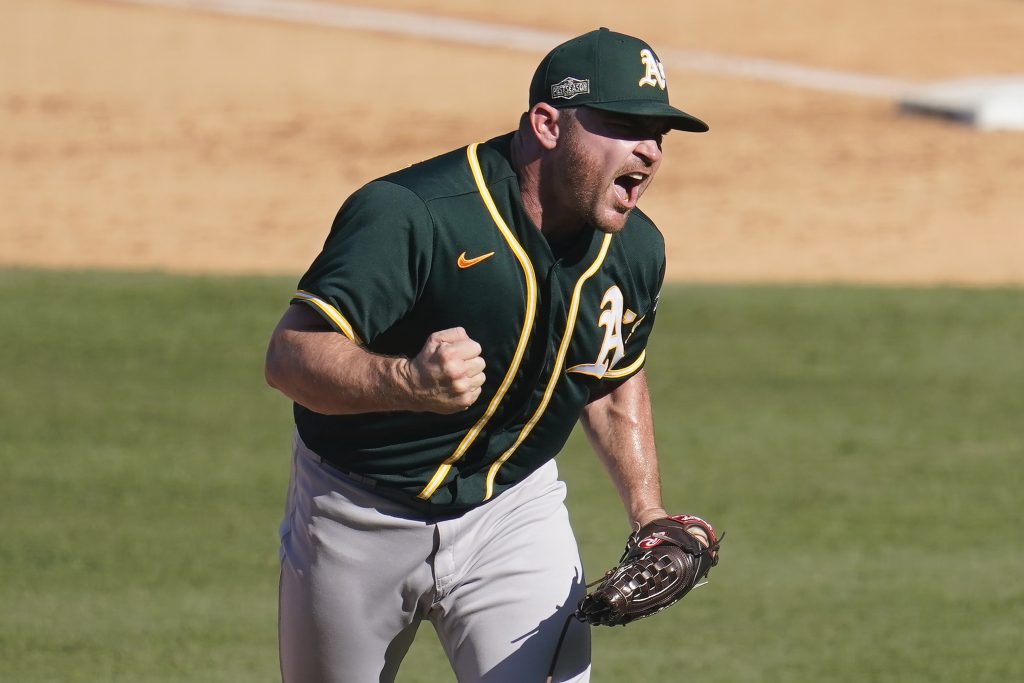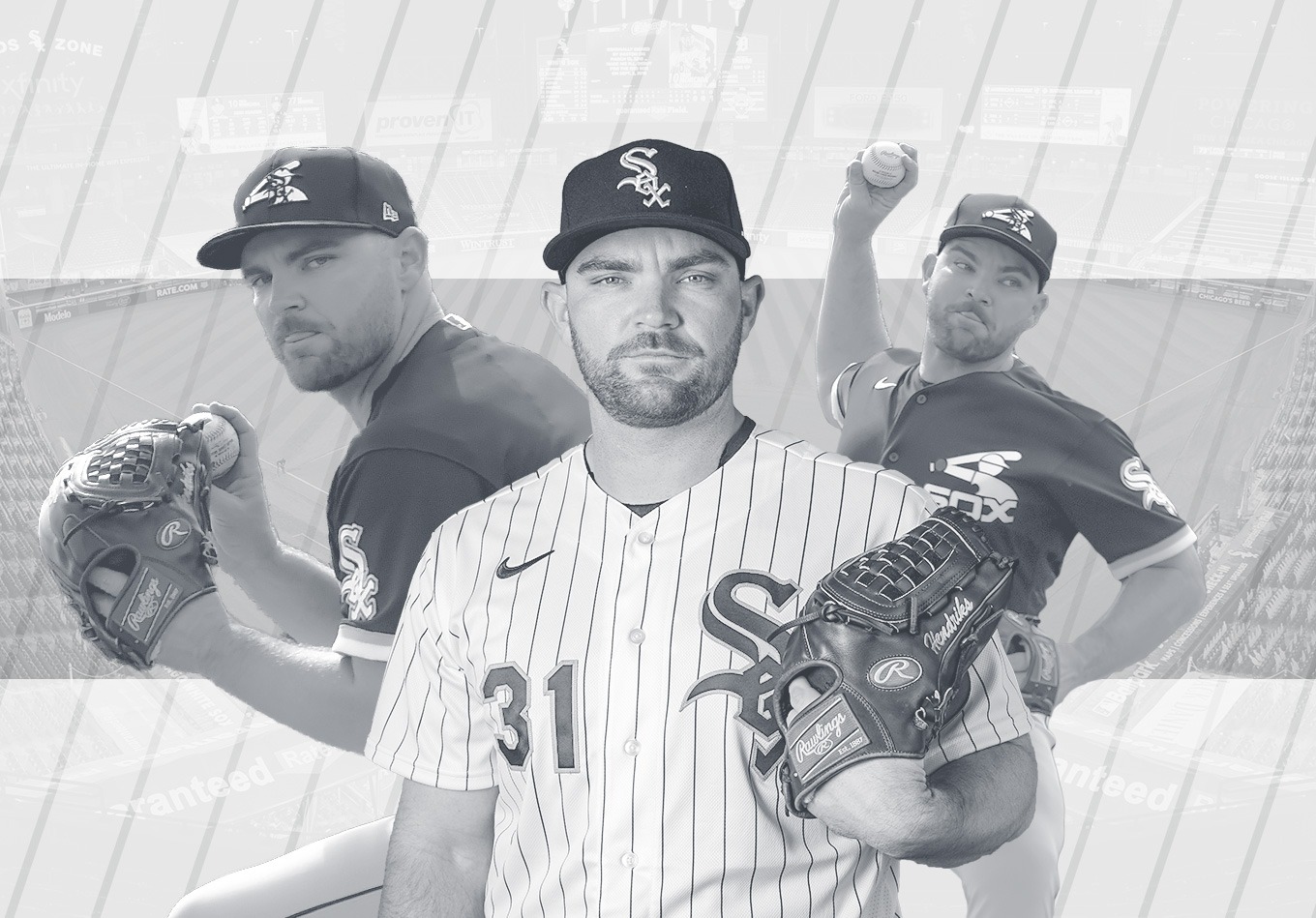Liam Hendrik’s baseball backstory is in part Midwestern and in part anything but.
He’s a Perth, Australia, native who’s spent his most notable MLB seasons to date in Oakland, following stops in Minnesota, Toronto twice and Kansas City. The off-field methods he now carries to Chicago are about as varied and incongruous as those places themselves.
Hendriks, one of MLB’s top closers, signed a three-year, $54 million contract with the Chicago White Sox in January, eager to aid a bullpen that in 2020 was solid but not elite. The ride has been anything but linear, breaking in with the Twins in 2011, continuing to hone his craft with the Blue Jays, Royals, back to the Blue Jays, and then the Athletics in 2016.
But leaving it at that is like disregarding the dive bars a band plays on its way to Madison Square Garden and the Hollywood Bowl. What’s perhaps lost in his MLB timeline since debuting for the Twins in 2011 is he’s been traded three times, claimed off waivers another three, designated for assignment four times, sent to the minors 10 times, and outrighted to the minors once more. He never played for two of the teams to claim him – the Chicago Cubs and Baltimore Orioles. The instability early in his career landed him not only in those MLB cities, but also in Rochester, Buffalo, Omaha, Northwest Arkansas, Stockton and Nashville.
A remarkable variety of fascinating minor league baseball hats were worn. And then he found a Major League one that fit.
Since taking over as the Athletics’ closer on June 21, 2019, Hendriks has in 68 innings matched Jacob deGrom’s league-best 1.99 ERA, while his 39 saves and 14.7 strikeouts per nine innings lead baseball among those with at least 60 innings pitched.
But it wasn’t until landing in Oakland that Hendriks truly felt that he belonged in the big leagues.
“A lot of the time, I felt like I was just there,” Hendriks said. “I didn’t feel like I had a place where I could succeed. I put ceilings on myself. I’d cap myself in statistical categories or whether it be in the role I was at – I’m not that guy, I’ll never be at that point. Just hoping to eke out here and there.”
And then came some words of wisdom from an unlikely source: Ruby. Ruby conveying the messages of her tarot cards, that is.
“I had a bit of a come-to-Jesus moment, where I used some different sources,” Hendriks said. “My wife actually connected us with a tarot card reader – Ruby. She had no idea about baseball and she still has zero idea about baseball. But she was like, ‘Okay, why can’t you do that?’ Then you get thinking, ‘She’s right, why can’t I? Why can’t I break that record or get to his position that I thought was unattainable?’ You take those ceilings off and restrictions away, all of a sudden let the engine purr a little bit and look where we are.”

What’s remained, and understandably so, is an attitude that’s either cultivated to manufacture competitive drive or developed from needing to constantly prove himself in a new place.
“There was a lot of perseverance and persistence,” the 32-year-old said. “The biggest thing for me is trying to prove people wrong. There’s a lot of people out there that say I can’t do it again, can’t do it again, can’t do it again. Now, it’s going out to prove them wrong. ‘You don’t think I can do it again? Watch me, this is what I’m going to do.’”
Hendriks considers himself a leader. People who have had a decade like he’s had and managed to emerge successful often do. He’s already started imparting this mindset in the White Sox’s clubhouse.
“On the board, I wrote FIGJAM: f*** I’m good, just ask me. That positive mindset is one of the biggest things. If you throw a pitch with conviction, a pitch that you really want to throw, it’s going to be better than a perfectly placed other pitch because you had that vibe, intensity and aggressiveness behind it.”
It’s hard to argue with the results. Hendriks is a ninth-inning specialist, having recorded a 1.42 ERA (third in MLB last season), 0.68 WHIP (first) in 19 ninth-inning appearances. Since 2018, Hendriks tops the list for ERA (1.81) in the ninth inning among those to have pitched at least 50 innings, while his WHIP (0.80) is second to Josh Hader (0.77).
But modern baseball has an ongoing tug of war with the ninth-inning man that’s got as much to do with numbers as it does to do with mindset. So, is there an advantage to having a traditional closer as opposed to a more analytical or committee approach?
“I think there is,” Hendriks insisted. “I may be a bit biased because I want the ninth inning. Just purely based on the fact that you’ll see guys and they will be really good in the highest leveraged situations throughout the game or anything and then they struggle in the ninth inning. It’s a different mindset, different way of approaching the ball.
“In saying that, it gives some fluidly. All of a sudden, if you’re up by three, you know you’re getting the ninth. If you know you’re getting the ninth, you prepare for that inning. If you’re not sure when you’re going to pitch between the sixth and the ninth, the preparation gets a little different.
“Some guys are good at it, some guys aren’t. I think any time you give a guy a certain role, it’s easier to adapt. If you get that consistent role, you know what you need to do to get ready.”
Having read that, and having considered the anything-but-empirical nature of something like tarot, one might assume Hendriks is dismissive of spreadsheets and heatmaps. Not so. Data and technology continue to play a huge role in MLB, and Hendriks is one of their champions. They just have to be used in the right moment.
“I have two separate ways of looking at it,” he said. “I love the analytical side off the field because I love to be able to compare and look at something and be like, ‘OK, what was I doing when I was good, what was I doing when I was bad? What is the difference, and this is one area I need to focus on.’ Whether it be, for me, release height, release extension point, the spin axis, the spin rate and all that fun stuff.
“And as soon as the game hits, I don’t know a single thing. I want to be as stupid as I can on the mound because as soon as you start overthinking things, you just start thinking that you’ll come up with some negative ideas and it snowballs.
“For me, I love the analytical stuff off field and ways to get better, but on the field, I want to be as dumb as possible. … It’s a lot easier to play the game when you’re not having to worry about anything else and letting everything take over.”
That will now happen in Chicago for one of baseball’s most exciting teams.
2020 Whiff+ Leaders, Relievers
(Min. 50 Batters Faced)
| Rank | Pitcher | Team | Whiff+ |
|---|---|---|---|
| 1 | Jake McGee | Dodgers | 214 |
| 2 | Aroldis Chapman | Yankees | 210 |
| 3 | Nick Anderson | Rays | 205 |
| 4 | Tanner Rainey | Nationals | 190 |
| 5 | Edwin Diaz | Mets | 187 |
| 6 | Liam Hendriks | A's | 179 |
Gone are the days of the White Sox’s 100-loss seasons, with 2018’s 62-100 record consigned to memory. It might be bitter memory if the White Sox didn’t have bigger things to concern themselves with, now placed firmly in contention mode with a rebuild in the rear-view mirror following an accelerated ascent during the 2020 coronavirus-shortened season.
Led by American League MVP Jose Abreu, the White Sox returned to the playoffs for the first time since 2008. But it is win now for the White Sox, who swapped manager Rick Renteria for Hall of Famer Tony La Russa in pursuit of a first World Series crown in 16 years.
While most projections tip La Russa’s team to contend, the 2019 All-Star closer is carrying forward that mindset that let him to success with the A’s: silencing any remaining naysayers.
“There’s been some projections that said we will be pretty good this year, but there’s been some that we’ve taken a little offensively,” Hendriks said. “We’re focusing more on the bad ones.
“The mindset we have to take is, ‘You guys don’t think we’re going to get to 95, 100 or however many wins, we’re going to prove you wrong and watch us do what we need to do and we’re going go out there and make sure we win this division.’”
In snapping that 12-year postseason drought in 2020, the White Sox were the first AL team to clinch a playoff spot but slid into the playoffs after losing nine of their final 12 regular-season games.
Hendriks and the A’s eliminated Chicago in the revamped wild-card round. Having contributed to the White Sox’s demise, Hendriks now finds himself at Guaranteed Rate Field with a contract to live up to – his average annual salary of $18 million is a record for a relief pitcher.
“The big thing for me is keeping the foot on the gas for as long as we can,” he said. “They self-admitted that once they clinched a playoff spot last year, they kind of got too relaxed. They thought they’d made it.”
The Chicago bullpen blew more saves than it converted in those final 12 games and wasn’t quite as good as it was over the course of the season. It ranked seventh in baseball with a 3.76 ERA, though that was more than a full run behind league-leading Oakland (2.72).
White Sox relievers ranked ninth in whiff+ (112) and 11th in raw value- (91). Hendriks’ 179 whiff+ last season was sixth best in MLB among pitchers to face at least 50 batters, and his 45 RV- ranked 18th, meaning there’s certainly a measurable benefit to be had in adding the 2020 AL Reliever of the Year.
“We’re going to have seven or eight guys out there, and at certain points of the year, we’re going to have to rely on all seven or eight to get it done and making sure we have confidence in everyone at all times,” Hendriks said.
And if they’re not getting it done, perhaps they’ll do one of two things: consult the numbers or look for relief in Ruby.
This piece is based off of Sacha Pisani’s exclusive interview with Liam Hendriks. Advanced data by Lucas Haupt. Design by Ruben Diaz.
